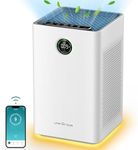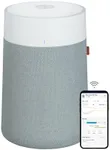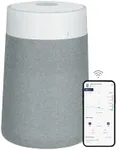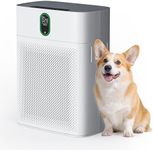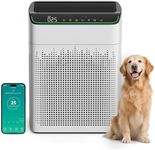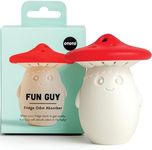Buying Guide for the Best Air Purifier For Mold Spores
Choosing an air purifier for mold spores is all about ensuring the air in your home is clean and safe to breathe, especially if you or your family members have allergies or sensitivities. Mold spores are tiny and can easily float through the air, so the right air purifier can help reduce their presence and improve your indoor air quality. When shopping, focus on the features that directly impact how well the purifier can capture and remove these microscopic particles. Understanding the key specifications will help you match the purifier to your room size, lifestyle, and health needs.HEPA Filter TypeA HEPA filter is a special kind of filter designed to capture very small particles, including mold spores. This specification is important because only true HEPA filters can trap particles as small as 0.3 microns with high efficiency. When looking at HEPA filters, you'll see terms like 'True HEPA' or 'HEPA-type.' True HEPA is the gold standard for removing mold spores, while HEPA-type filters are less effective. If you want the best protection against mold, always choose a purifier with a True HEPA filter. If you have mild sensitivities, a HEPA-type filter might be enough, but for allergies or asthma, stick with True HEPA.
CADR (Clean Air Delivery Rate)CADR measures how quickly and efficiently an air purifier can clean the air of specific particles, including dust, pollen, and smoke. For mold spores, a higher CADR means the purifier can remove them from the air faster. CADR values are usually given in cubic feet per minute (CFM). Small rooms can get by with lower CADR ratings, while larger rooms need higher numbers. To pick the right CADR, match it to your room size: for bedrooms or offices, a lower CADR is fine, but for living rooms or open spaces, look for a higher CADR to ensure effective cleaning.
Room CoverageRoom coverage tells you the maximum size of the room the air purifier can handle effectively. This is important because using a purifier in a room that's too large will reduce its effectiveness against mold spores. Room coverage is usually listed in square feet or square meters. To choose the right one, measure your room and pick a purifier rated for at least that size. If you plan to move the purifier between rooms, consider the largest room you’ll use it in.
Filter Replacement IndicatorA filter replacement indicator is a feature that lets you know when it's time to change the filter. This is important because a clogged or dirty filter can't trap mold spores effectively. Some purifiers have a simple light, while others may have digital displays. If you’re likely to forget about maintenance, this feature can help you keep your purifier working at its best. If you’re diligent about checking filters, you might not need this, but it’s a helpful convenience for most people.
Noise LevelNoise level refers to how loud the air purifier is when running. This matters if you plan to use it in a bedroom, nursery, or office where quiet is important. Noise is usually measured in decibels (dB). Lower numbers mean quieter operation. If you’re sensitive to noise or want to use the purifier while sleeping, look for models with lower noise levels or a 'sleep mode.' For living areas where noise isn’t as much of a concern, this may be less important.
Additional Filtration (Activated Carbon)Some air purifiers include an activated carbon filter in addition to the HEPA filter. This is important if you want to remove odors, chemicals, or volatile organic compounds (VOCs) along with mold spores. Activated carbon filters absorb gases and smells, making the air feel fresher. If you’re only concerned about mold spores, this feature is optional, but if you also want to tackle musty odors or other pollutants, look for a purifier with this extra layer.

